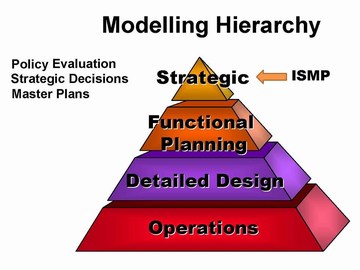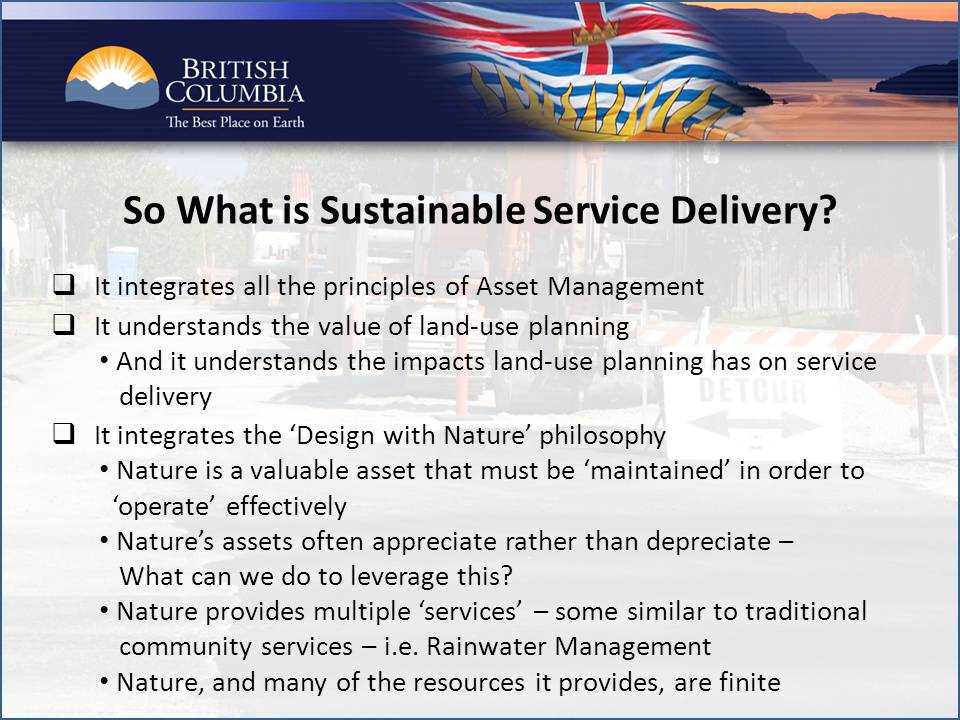Primer on Urban Watershed Modelling to Inform Local Government Decision Processes
Note to Reader:
ISMP is the acronym for Integrated Stormwater Management Plan. In the late 1990s, the genesis for ISMPs was a desire by local governments to integrate the community, engineering, planning and environmental perspectives.
To fill a professional development need, the Partnership for Water Sustainability in British Columbia has developed a 2-day course titled ISMP Course Correction: Achieve More with Less. The City of Surrey hosted the first course on November 9-10, 2011.
As part of the course curriculum, the Partnership unveiled two Primers. These provide the technical foundation for the course curriculum. One primer deals with science-based hydrology, and the other with watershed modeling. The story below introduces the second. To download a copy of the Primer, click here.
ISMP Course Correction: Move to a Levels-of-Protection Approach
The purpose of the Primer on Urban Watershed Modelling to Inform Local Government Decision Processes is to provide engineers and non-engineers with a common understanding regarding ‘appropriate and affordable’ computer modelling. The Primer sets the stage for a shift to a level-of-service approach to setting watershed-specific rainwater runoff targets. By definition, levels-of-protection is a sub-set of level-of-service and is a way to correlate proposed actions with watershed health.
Watershed | Storm Drainage System
A guiding principle is that the level and/or detail of modelling should reflect what information is needed by local government to make an informed decision. The Primer addresses two separate dimensions of an ISMP:
- The Watershed– where the focus is on performance targets for rainfall capture and runoff control.
- The Storm Drainage System – where the focus is on pipe discharge capacity and level-of-service for flood protection.
A foundation concept in the Primer is that of the ‘Modelling Hierarchy’. Reproduced from Stomwater Planning: A Guidebook for British Columbia, the image below illustrates the four main levels (or applications) of drainage modelling. The Guidebook states that the modelling component of an ISMP “should be at a strategic (i.e. conceptual or overview) level to provide basic information that will support the local government decision process”. The ISMP Course Correction reaffirms this core tenet.

ISMP Course Correction: Sustainable Service Delivery is a Foundation Piece
Local governments are faced with the financial challenge posed by what is known as the ‘unfunded infrastructure liability’. It is increasing year after year due to the legacy cost resulting from renewal and/or replacement of road, water and sewer systems.
The notion of ‘sustainable service delivery’ therefore underpins the ISMP Course Correction. This is the Province of British Columbia’s branding for a life-cycle way of thinking about infrastructure needs and how to pay for them over time. The paradigm-shift starts with land-use planning and determining what services can be provided sustainably, both fiscally and ecologically.
Primer Provides Guidance in Three Areas
An increasing local government ‘infrastructure deficit’ means that there will be even more competition for available funding. Thus, a driver for the ISMP Course Correction is to demonstrate how to ‘do more with less’ by placing emphasis on what really matters and being outcome-oriented. To provide local governments with a starting point for applying lessons learned over the past decade, the Primer elaborates on:
- Performance Targets: brings forward a synopsis of key information from Stormwater Planning: A Guidebook for British Columbia
- Levels-of-Service:explains why and how the major financial challenge resulting from the ‘unfunded infrastructure liability’ is a driver for a life-cycle approach to asset management and renewal
- Screening / Scenario Tools: introduces the ‘Drainage Infrastructure Screening Tool’ for establishing priorities and making budget decisions for storm sewer system upgrading; and describes the application of the ‘Water Balance Model powered by QUALHYMO’ for establishing watershed-specific performance targets.
From the stream health perspective, appropriate and effective green infrastructure is a way to increase the level-of-service. Expressed another way, green infrastructure that restores the rainfall absorption capacity of the watershed landscape will increase the level of ecological protection.
For storm sewer systems, the process of establishing an acceptable ‘Level-of-Service’ will require local governments to review, examine, and justify the existing standards and how to transition into the future where costs must be balanced against public needs and expectations.
Drainage Modelling in the 21st Century
“Much of the discussion and arguments are about the theory and model. You will hear these kinds of statements: I have a model that does this or does that; I can do a pipe this big or that big; I can do this kind of thing, I can do that kind of thing. Yet the heavy lifting is at the other end,” states Dr. Charles Rowney, Scientific Authority for the Water Balance Model  and creator of the QUALHYMO calculation engine.
and creator of the QUALHYMO calculation engine.
“Yet the real problems and solutions come together when you look at the site and the data youhave to represent what you have. How do you compare the future condition that is very undefined with a calibrated tool that is very well defined? There is much that we do that has a place and purpose, BUT sometimes what we do is questionable.”
To Learn More:
To download a copy, click on Primer on Urban Watershed Modelling to Inform Local Government Decision Processes.
The Course on the ISMP Course Correction comprises eight modules. The Primer provides the technical foundation for Module F – Move to a Levels-of-Protection Approach to Sustainable Service Delivery. To access the ‘homepage’ for the course, click here.
Also, click on Sustainable Service Delivery Links Land Use Planning, Watershed Health and ‘Infrastructure Liability’ to read about an April 2011 presentation by Glen Brown, Executive Director with the Ministry of Community, Sport and Cultural Development. His responsibilities encompass local government infrastructure and finance. Glen Brown is also Deputy Inspector of Municipalities.



